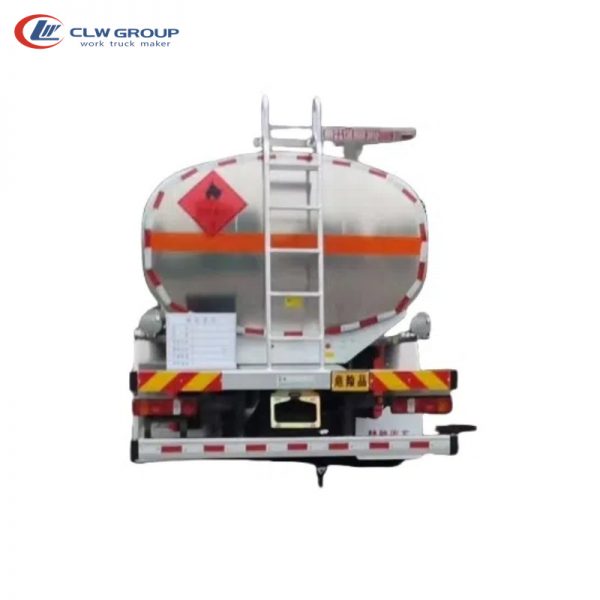Ensuring Construction Safety The Importance of Truck Mounted Cranes
Introduction: Construction sites are inherently hazardous environments, with workers facing a variety of risks on a daily basis. One of the key aspects of ensuring safety in construction is the proper use of equipment, including truck mounted cranes. These versatile machines play a crucial role in lifting and moving heavy materials on construction sites, but they also pose significant safety risks if not used correctly. In this article, we will explore the importance of truck mounted crane safety in construction and provide guidelines for ensuring safe operation. Overview of Truck Mounted Cranes: Truck mounted cranes are a type of mobile crane that are mounted on a truck chassis, allowing for easy transportation to and from construction sites. These cranes are equipped with a telescopic boom that can be extended to reach high elevations and lift heavy loads. Truck mounted cranes are commonly used in construction for tasks such as lifting steel beams, precast concrete panels, and other heavy materials. Safety Considerations for Truck Mounted Cranes: Operating a truck mounted crane requires specialized training and knowledge of proper safety procedures. Failure to follow safety guidelines can result in accidents, injuries, and even fatalities. refrigerator truck of the key safety considerations for truck mounted cranes include: 1. Training and Certification: Before operating a truck mounted crane, operators should undergo comprehensive training to ensure they understand how to safely use the equipment. Operators should also be certified to operate the specific type of crane they will be using. 2. Inspections and Maintenance: Regular inspections and maintenance are essential to ensuring the safe operation of a truck mounted crane. Operators should inspect the crane before each use to check for any signs of wear or damage. Any issues should be addressed promptly to prevent accidents. 3. Load Capacity: Truck mounted cranes have specific load capacities that should not be exceeded. Operators should be aware of the crane's load capacity and ensure that loads are properly secured and balanced before lifting. 4. Stability: Proper crane setup is crucial for maintaining stability during operation. The crane should be set up on a level surface with outriggers deployed to provide additional support. Operators should also be mindful of wind conditions that can affect the crane's stability. 5. Communication: Clear communication between the crane operator and ground personnel is essential for safe operation. Hand signals or radios should be used to coordinate movements and ensure that everyone is aware of the crane's actions. 6. Avoiding Hazards: Operators should be aware of potential hazards on the construction site, such as overhead power lines, uneven terrain, or other obstacles that could interfere with the crane's operation. Proper planning and hazard assessment are key to preventing accidents. 7. Emergency Procedures: In the event of an emergency, operators should be trained on proper emergency procedures, such as how to safely lower a load or shut down the crane in case of a malfunction. Case Studies: To highlight the importance of truck mounted crane safety in construction, we will examine two real-life case studies where accidents occurred due to improper crane operation: Case Study 1: In 2018, a construction worker was seriously injured when a truck mounted crane tipped over while lifting a heavy load. The accident was attributed to the operator exceeding the crane's load capacity and failing to properly secure the load. The worker suffered multiple fractures and had to undergo extensive surgery and rehabilitation. Case Study 2: A construction site in 2019 experienced a crane collapse that resulted in the death of two workers. An investigation revealed that the crane operator had not received proper training and was unaware of the crane's load capacity. The crane had also not been properly maintained, leading to mechanical failure during operation. Lessons Learned:  These case studies serve as a sobering reminder of the importance of truck mounted crane safety in construction. By following proper safety procedures and guidelines, accidents like these can be prevented, saving lives and avoiding costly damages. Construction companies should prioritize safety training for crane operators, conduct regular inspections and maintenance, and enforce strict safety protocols on-site. Conclusion: Truck mounted cranes are indispensable tools in construction, but they also present significant safety risks if not used correctly. By prioritizing safety training, inspections, and maintenance, construction companies can ensure the safe operation of truck mounted cranes and protect the well-being of their workers. Adhering to established safety guidelines and best practices is essential for preventing accidents and creating a culture of safety on construction sites. Remember, when it comes to truck mounted crane safety, it's better to be safe than sorry.
These case studies serve as a sobering reminder of the importance of truck mounted crane safety in construction. By following proper safety procedures and guidelines, accidents like these can be prevented, saving lives and avoiding costly damages. Construction companies should prioritize safety training for crane operators, conduct regular inspections and maintenance, and enforce strict safety protocols on-site. Conclusion: Truck mounted cranes are indispensable tools in construction, but they also present significant safety risks if not used correctly. By prioritizing safety training, inspections, and maintenance, construction companies can ensure the safe operation of truck mounted cranes and protect the well-being of their workers. Adhering to established safety guidelines and best practices is essential for preventing accidents and creating a culture of safety on construction sites. Remember, when it comes to truck mounted crane safety, it's better to be safe than sorry.